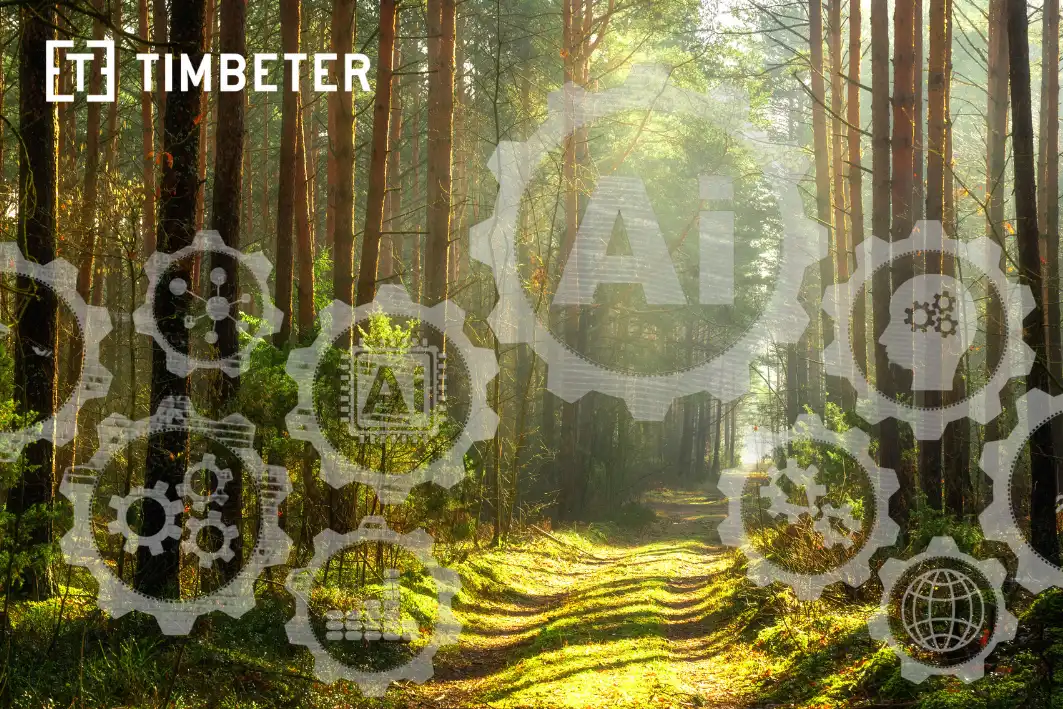Forestry has traditionally been a field where manual labor and human judgment are critical. From measuring logs to assessing tree health, many tasks require precision and expertise. However, artificial intelligence (AI) is increasingly stepping into the forestry industry, offering innovative solutions that make the process faster, more accurate, and more sustainable. One of the key players in this revolution is Timbeter, an AI-powered tool designed specifically to aid in timber measurement and forestry management.
The Role of AI in Forestry
AI technologies, including neural networks and machine learning, are transforming forestry by improving accuracy and efficiency in timber measurement, replacing time-consuming and error-prone manual methods. Neural networks, which mimic the structure of the human brain, excel at identifying patterns within complex data—such as the shapes, sizes, and densities of timber in an image. This technology has opened new doors in forestry, where precision is crucial, especially for tracking inventory and monitoring forest health.
The Nobel Prize in Physics 2024 was awarded jointly to John J. Hopfield and Geoffrey E. Hinton for foundational discoveries and inventions that enable machine learning with artificial neural networks.
These groundbreaking advancements have profoundly expanded the potential of AI across various sectors, including forestry. Hopfield and Hinton’s pioneering work on artificial neural networks has paved the way for creating sophisticated AI models capable of analyzing complex, high-dimensional datasets with exceptional accuracy. Such advancements hold transformative potential in forestry, where managing vast amounts of environmental data is crucial for sustainable development. With these AI technologies, forestry professionals can now monitor ecosystems in real-time, detecting subtle changes in forest health, biodiversity, and soil conditions.
How Timbeter Uses AI
AI in Timbeter operates through advanced image recognition and neural networks, which mimic aspects of human vision and learning. When users capture a photo of a log pile, Timbeter’s AI-powered app processes the image using image recognition algorithms that identify and classify features like the shape, edges, and dimensions of each log. The neural networks in Timbeter, modeled after the human brain, are trained on extensive log data, allowing them to recognize logs of different sizes, angles, and arrangements. As the network is exposed to more images, its accuracy improves. Timbeter’s AI then analyzes characteristics such as log diameter and spacing to calculate measurements like volume and other critical dimensions. By automating these measurements, Timbeter eliminates much of the manual effort and minimizes human error, speeding up the workflow and ensuring reliable data. This makes the timber measurement process both efficient and accurate, greatly benefiting forestry and timber management.
Beyond this core function, Timbeter leverages AI to provide in-depth data analytics and cloud-based reporting, helping to optimize inventory management and improve supply chain efficiency. The tool also integrates seamlessly with other forestry management platforms, facilitating better oversight of the entire logging process. With real-time decision-making capabilities, Timbeter supports forestry companies in planning sustainable harvesting schedules and predicting future yields, all while promoting transparency and compliance with industry regulations.
Benefits of Timbeter and AI in Forestry
Efficiency: Timbeter dramatically reduces the time required for timber measurement. A task that might take hours manually can now be completed in minutes with AI, allowing forestry workers to focus on other important tasks.
Cost Savings: The accuracy provided by Timbeter helps prevent disputes over timber measurements and ensures that companies receive fair compensation for their harvests. Additionally, by reducing labor costs and optimizing processes, AI helps lower operational expenses.
Sustainability: Accurate measurements are essential for sustainable forestry practices. Timbeter ensures that timber resources are logged responsibly, avoiding over-harvesting and contributing to the long-term health of the forest ecosystem.
Transparency: With AI-generated data and reports, companies can maintain greater transparency with regulatory agencies, customers, and stakeholders. This leads to improved trust and accountability within the industry.
AI is driving a new era of innovation in the forestry industry, and Timbeter is at the forefront of this transformation. By leveraging AI—backed by the latest advancements in neural networks and computational science—for timber measurement and management, forestry companies can boost efficiency, reduce costs, and contribute to more sustainable forest management practices. As technology continues to evolve, AI will play an increasingly central role in ensuring the future health of our forests and ecosystems.
In a world where environmental sustainability is becoming more critical by the day, the role of AI in forestry management is not just a technological advancement—it’s a necessity. The advances recognized by recent Nobel Prize winners in the field underscore the growing importance and potential of AI in industries that require precise, responsible, and innovative solutions.
